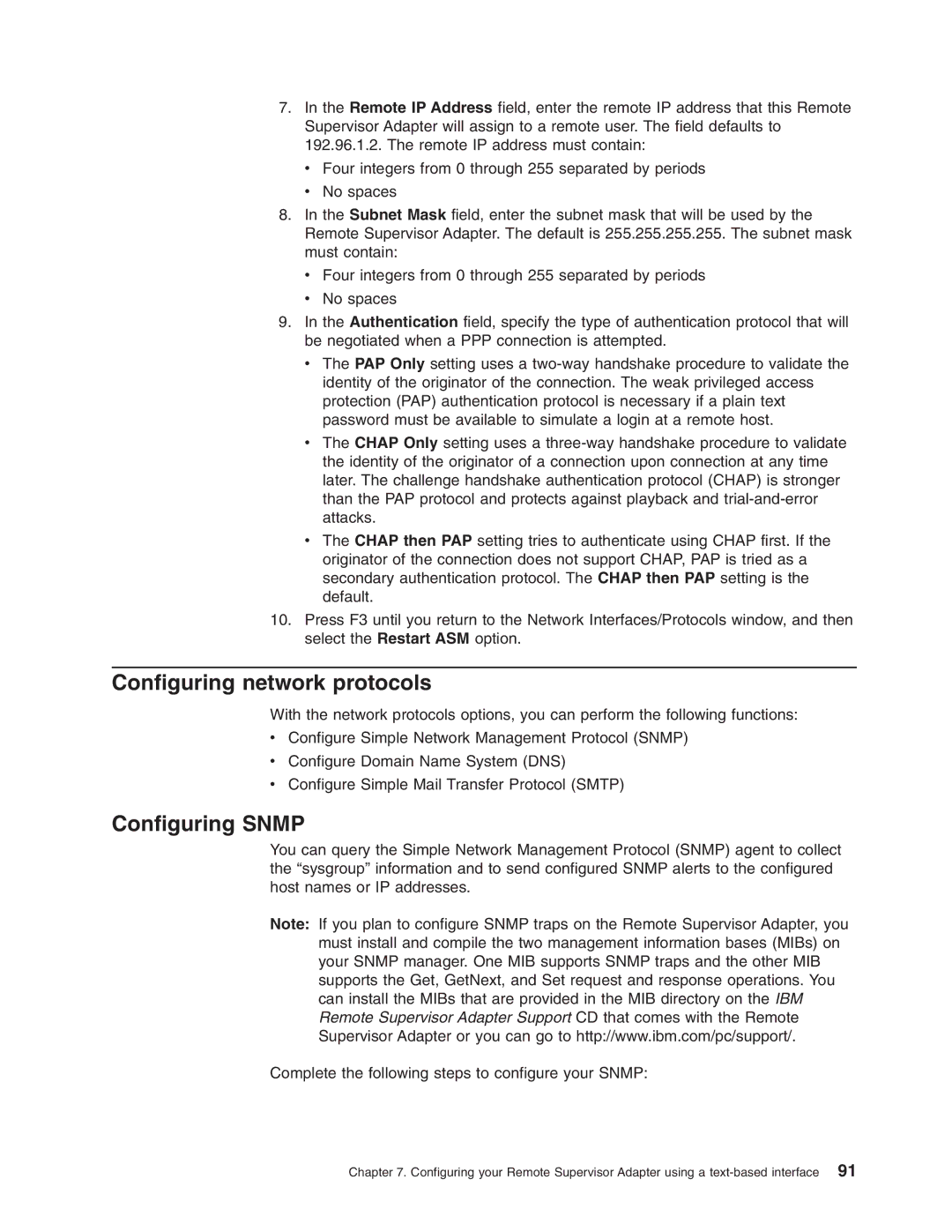7.In the Remote IP Address field, enter the remote IP address that this Remote Supervisor Adapter will assign to a remote user. The field defaults to 192.96.1.2. The remote IP address must contain:
vFour integers from 0 through 255 separated by periods
vNo spaces
8.In the Subnet Mask field, enter the subnet mask that will be used by the Remote Supervisor Adapter. The default is 255.255.255.255. The subnet mask must contain:
vFour integers from 0 through 255 separated by periods
vNo spaces
9.In the Authentication field, specify the type of authentication protocol that will be negotiated when a PPP connection is attempted.
vThe PAP Only setting uses a
vThe CHAP Only setting uses a
vThe CHAP then PAP setting tries to authenticate using CHAP first. If the originator of the connection does not support CHAP, PAP is tried as a secondary authentication protocol. The CHAP then PAP setting is the default.
10.Press F3 until you return to the Network Interfaces/Protocols window, and then select the Restart ASM option.
Configuring network protocols
With the network protocols options, you can perform the following functions:
vConfigure Simple Network Management Protocol (SNMP)
vConfigure Domain Name System (DNS)
vConfigure Simple Mail Transfer Protocol (SMTP)
Configuring SNMP
You can query the Simple Network Management Protocol (SNMP) agent to collect the “sysgroup” information and to send configured SNMP alerts to the configured host names or IP addresses.
Note: If you plan to configure SNMP traps on the Remote Supervisor Adapter, you must install and compile the two management information bases (MIBs) on your SNMP manager. One MIB supports SNMP traps and the other MIB supports the Get, GetNext, and Set request and response operations. You can install the MIBs that are provided in the MIB directory on the IBM Remote Supervisor Adapter Support CD that comes with the Remote Supervisor Adapter or you can go to http://www.ibm.com/pc/support/.
Complete the following steps to configure your SNMP:
Chapter 7. Configuring your Remote Supervisor Adapter using a
